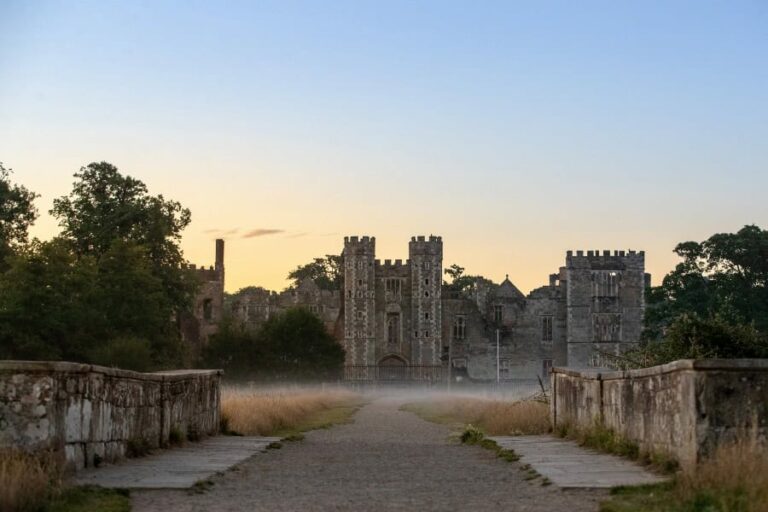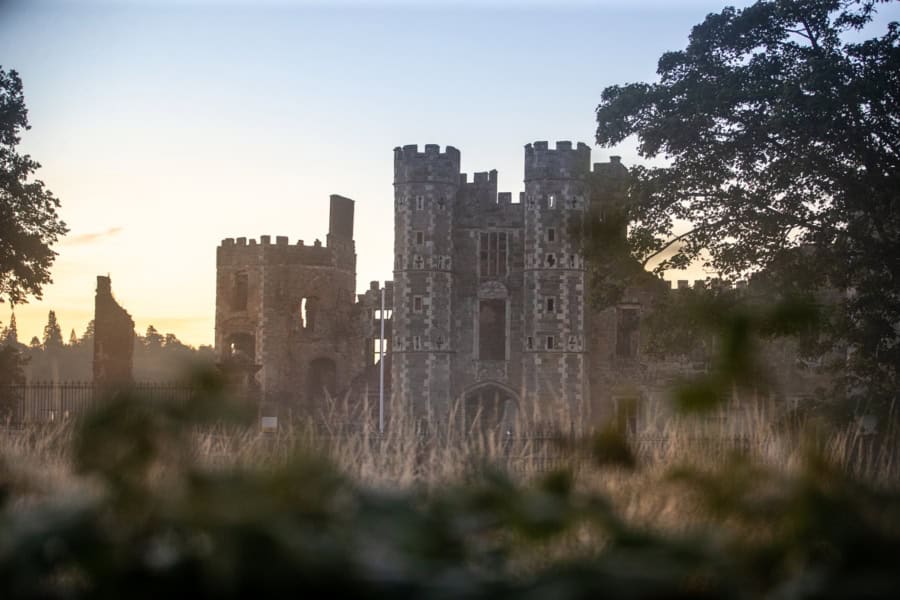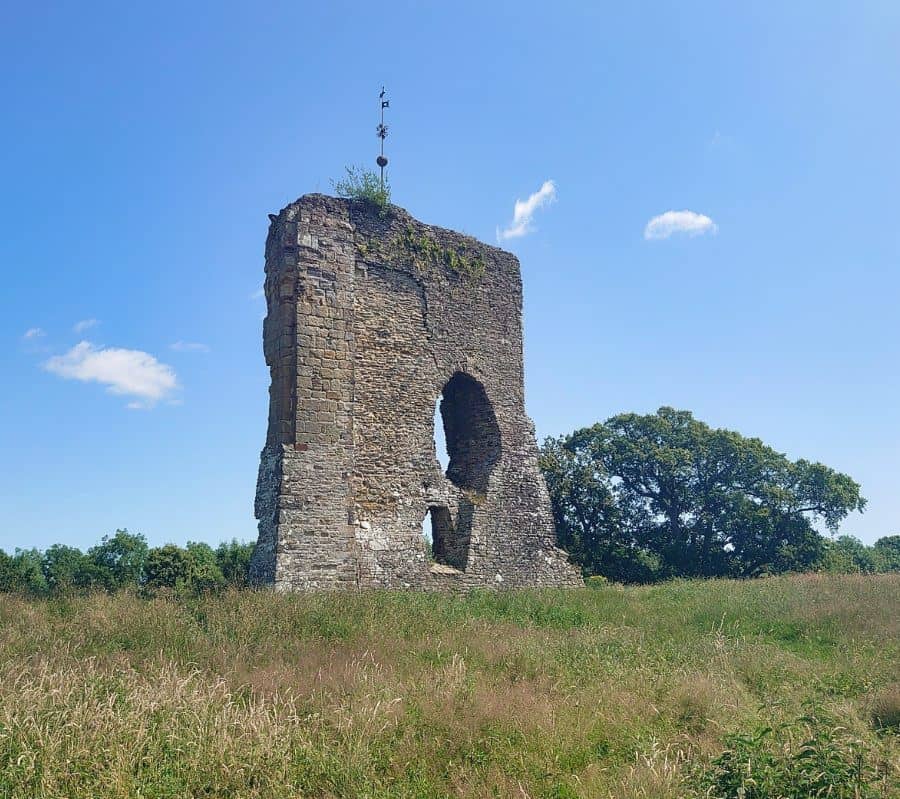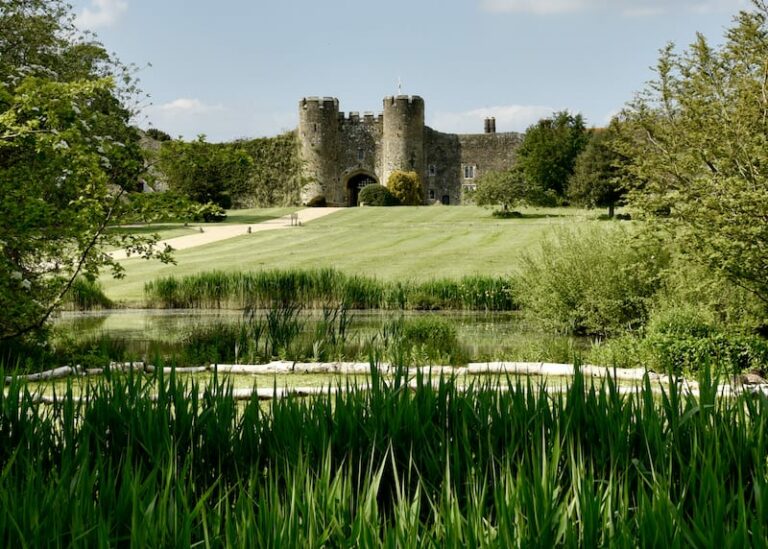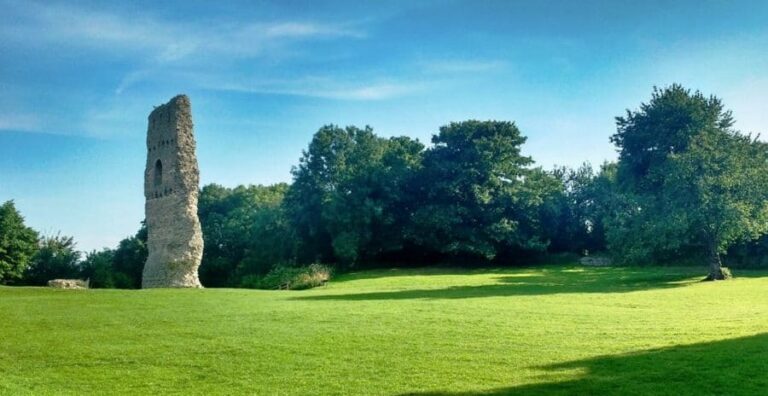Tourist header template
- Home
arrow_drop_down
- What’s On
arrow_drop_down
- Where To Stay
arrow_drop_down
- Things To Do
arrow_drop_down
- Eat & Drink
arrow_drop_down
- Shopping
arrow_drop_down
- Plan Your Visit
arrow_drop_down
- Local Businesses
arrow_drop_down
- Business Support
arrow_drop_down
- Local Directory
arrow_drop_down
- Estate & Lettings Agents & Architects
- Health, Beauty & Wellbeing
- Home & Gardening Services
- Photographers, Fashion & Lifestyle
- Retirement, Care & Funeral Services
- Travel, Holidays & Languages
- Tradesman, Builders and Property Services
- Vehicle Repairs, Storage, Hire & Taxi Services
- Weddings, Events & Entertainment
- Business Support
Castles to visit in West Sussex
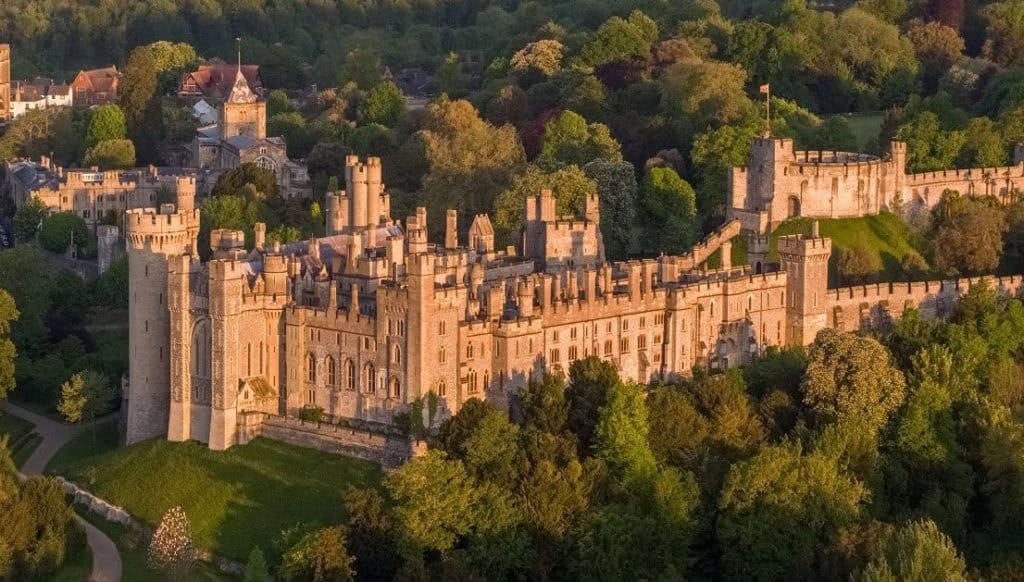
When you think of castles, what comes to mind? Perhaps fairytales, legends, fascinating stories, lots of history or a building that can just be someone’s home. The castles we have in West Sussex could make you think of all of these!
In this blog we have given you a taster all about what castles are to be found in our area. They are all different but in one way they are all the same – they all provide a wonderful day out! They have all been there a long time and if their walls could talk, what stories our castles could tell!
ARUNDEL CASTLE
When you think about what a castle should really look like, then Arundel Castle truly fits the bill! Approaching Arundel from the railway bridge into the town, you cannot fail to immediately see this magnificent castle, situated high on a hill, commanding the landscape with views across the Downs and The River Arun. It’s location and sheer size with turrets, narrow arrow slits for windows, portcullis and crenelated keep makes you realise that this is indeed, what most folk would think of as a proper castle! This majestic building commands the skyline and watches over Arundel – as it has done so for over 1000 years.
After the Battle of Hastings, William the Conqueror awarded one of his loyal barons, Roger de Montgomery, who had looked after Normandy while William was away in England, about a third of Sussex! A very big ’thank you’ for all the support he had given to William. As we know, there is seldom such a thing as a ‘free lunch’ and part of the deal was that Roger had to build fortifications in return for this gifted land!
So, the original wooden castle was founded in 1067 and Arundel became a stronghold to ensure the town was guarded from invasion. At that time Arundel was a very busy port and ships were able to sail inland up The River Arun.
For that reason, Arundel Castle and indeed many others built after the Norman Conquest, were often constructed by rivers as they protected what would have been an easy way for invaders to get further inland. The Duke of Norfolk Arundel Castle, the Dukes and the Earls: A Potted History and his ancestors have lived there ever since, making it one of the longest inhabited country houses in England.
Arundel Castle , situated on the hill overlooking the town for centuries, has certainly witnessed history unfold. It was there throughout the Wars of the Roses, the Tudors and the Civil War. Charles II was almost captured nearby whilst fleeing to France. Henry IV (4th) was married in the Castle and Queen Victoria stayed there for a few days with Prince Albert. You can still see the bed they slept in!
King Charles, Coronation of The King and The Queen Consort when he was the Prince of Wales, opened The Collector Earl’s Gardens, which boasts unique features including Oberon’s Palace with a floating crown!
These gardens hold a magnificent tulip festival It’s Tulip Time in Arundel! every year. Unsurprisingly, as Arundel Castle has been around for so very long, there are many tales of ghostly happenings and several of these stories can be found in Halloween in Arundel.
COWDRAY HOUSE – or COWDRAY CASTLE as some folks prefer to call it!
Photographed by George Gunn at the Cowdray Estate
Although Cowdray Castle is sometimes considered to be a country house, as you approach Midhurst and look across the fields to this building, it really does look very much like a castle.
The Cowdray Heritage Ruins you see today, were once a majestic property with massive windows and crenelled towers. You can see why it is often referred to as a castle.
Originally a Tudor house visited by Kind Henry VIII and Queen Elizabeth I the imposing remains are rather like Thornfield Hall from the romantic novel Jane Eyre by Charlotte Bronte. You almost expect Jane Eyre and Edward Rochester to appear from behind one of the windows!
The original building was partly destroyed by a fire in 1793 – a bit more about all that later – and the ruins you see today, show the one intact tower remaining. Nonetheless, you can’t help but admire the beauty of what is still standing, towering over the countryside and River Rother.
Photographed by George Gunn at the Cowdray Estate
Now, back to the fire – as you will see when you visit Cowdray Heritage Ruins, it destroyed a large part of the original building. This devastating fire, is of course, all part of the history of the house and it becomes even more fascinating because of the curse that was supposed to have been put on the family in 1538.
A monk, not at all happy about being ousted from his home in Battle Abbey by the new owners, whose family also owned Cowdray, decided that to get his own back, he would put a curse on them to ‘suffer by fire and water’ and this would also ensure their family’s line would end.
The monk never stated exactly when this curse would take effect, but in the late 1700’s the owner, the 8th Viscount Montague, was going to be married and whilst he was away on his ‘stag do’, with friends, they all went out in a boat to ride the waters of the Rhine Falls. Although they thought this was a good idea and no doubt a great adventure, it turned out to be A Big Mistake as the 8th Viscount Montague was drowned and his body never found.
Whilst he was abroad, he had employed builders to work on the Castle to make Cowdray ready for when he and his bride returned from their nuptials. During the improvement work, one of the builders accidently set fire to the castle and the only part of the building to remain intact was the Kitchen Tower.
After the Viscount’s death the property passed to his sister’s two sons. Tragically both these boys were drowned off Bognor beach in 1815 and this left the family without an heir. So, do you think this was the Fire and Water curse coming to fruition or just a coincidence? No matter what conclusion you come to, it is a big coincidence that the castle was destroyed by fire, 3 male heirs drowned, and no male family member remained alive to inherit! Either way, it could be said that the monk definitely ‘got his own back!’
Guy Fawkes was once employed as a servant at Cowdray Castle when he worked there as a footman. His master was Sir Anthony Browne. Sir Anthony ended up being imprisoned because he may have had a possible involvement in the Gunpowder Plot!
Although he wasn’t imprisoned for long, I’m sure he still wished he had employed someone else – but getting good staff has often been tricky – even in 1605!
If you do visit Cowdray, allow yourself time to take a stroll round the lovely market town of Midhurst, the local countryside and River Rother walks nearby.
KNEPP CASTLE
Have you ever driven along the A24 towards Horsham, just south of Buck Barn crossroads, glanced out the window and seen a single tower on a grassy mound and wondered what this ruin used to be? You need wonder no more! This was where, in the 12th Century, Knepp Castle was built by one of the most powerful supporters of William the Conqueror – William de Braose. He was given the land as a ‘thank you’ by the new King of England.
This fortified castle, surrounded by deep ditches which are still visible today, overlooks the River Adur which many centuries ago was much larger and navigable than it is today. Surrounded by a huge deer park, the castle was used as a hunting lodge and during the 13th century, King John stayed there many times to hunt deer. He hunted with a pack of deer hounds when wild boar roamed freely over the land.
There were many fine oak trees growing in the park and the trunks were used for timber with the acorns providing food for the animals living in the woods. The royal family obviously enjoyed staying there as in later years Henry III, Edward II and Richard II were all guests of the de Braose family.
The castle passed by marriage to the Dukes of Norfolk and then onto a catholic family of ironmasters who lived there for two centuries. Eventually it was destroyed by Parliamentary troops to prevent it being used by the Royalist supporters during the Civil War. In the late 1700’s, the rubble from the demolished castle was used to build the Horsham to Steyning road, A24.
Moving on to more recent times, Knepp was used for agriculture by the Burrell family but the clay soil and use of chemicals in the past, made it very difficult to grow crops and make the farm profitable so in 2002 Charlie Burrell set out his ideas to establish a whole new way of using this land. Charlie launched his vision for rewilding Knepp by making plans to establish ‘A Biodiverse Wilderness Area in the Low Weald of Sussex’ and the rest as they say, is history.
When you visit Knepp now you can see for yourself how the land there is shaping the future of nature conservation. The changes in land management at Knepp has meant that wildlife, including many endangered species, have been given the chance to settle and breed.
Nightingales, turtle doves, storks, ravens, red kites, all 5 UK resident species of owl and many more birds have all made their home there. The magnificent Purple Emperor butterflies, 17 species of bats and an enormous number of insect species are now found living and breeding successfully at Knepp, mainly because of the way land has been rewilded.
The rewinding of Knepp has also introduced many mammals and if you follow one of their walking trails or go on a Knepp Wildland safari you may see their herds of deer, ponies, cattle and pigs. Click on Knepp – Rewilding Pioneers to find out more.
If you do visit Knepp, don’t forget to walk by the old castle ruin and remember this has stood there for centuries and is still watching over the land, while Knepp is truly ‘working with nature to build a sustainable future’. That old Castle ruin sits well within the landscape, quietly overseeing the wonderful changes unfolding all around it.
There is nowhere quite like Knepp so do visit this unique castle ruin and the surrounding 3500 acres. You will have a great day out.
AMBERLEY CASTLE
Situated at the foot of the South Downs, 900-year-old Amberley Castle is a unique luxury hotel and wedding venue. Inside the sixty-foot-high curtain wall and behind an ancient portcullis, you will find delicious afternoon teas, an outstanding restaurant, antiques, roaring log fires in the winter months and lovely grounds. The bedrooms are everything you would expect of such a magnificent country hotel.
Amberley Castle was mentioned in the Doomsday Book and to this day, you can still see many of the original features. During the Civil War the castle was a Royalist Stronghold. Cromwell’s army was responsible for damaging some 25 feet of the curtain wall, destroying the Great Hall and leaving the building in ruins. After the Civil War the new owner set about rebuilding and when the Monarchy had been restored in 1600, King Charles II visited Amberley Castle twice.
In 1872 it was used as a hunting lodge and the then owner; Lord Zouche, also owned another country mansion not far away at Parham House and Gardens. In 1893 it was sold to a local neighbour – the 15th Duke of Norfolk who lived in another castle a bit further along The River – yes, you’ve guessed where! – at Arundel Castle .
It became a private hotel in 1989 and Amberley Castle would be delighted to welcome you through their portcullis! So do call in to see them and indulge yourself in their luxury, excellent service, history and tradition.
BRAMBER CASTLE
Bramber Castle dates from the Norman Conquest, built by William de Broase – the same supporter of William the Conqueror who also owned Knepp Castle mentioned above – as a defensive and administrative centre for the newly created Rape of Bramber.
Defending a gap in the South Downs, Bramber castle was strategically positioned, being set high on a natural knoll overlooking the River Adur, but there is little left of the original structure today. Lots of the masonry was used to build a local bridge and some was also used on the buildings found throughout the village.
When it was decided to add an outer ditch in about 1209, this turned out to be a bad idea as years later in the 16th century, the excavation eventually caused the collapse of much of the curtain wall surrounding the castle.
All that’s left standing there now is the gatehouse tower. To the north of this gatehouse is the original castle motte with the mound of earth rising to about 30 foot – showing what an imposing building Bramber Castle would have been back in the day! A little distance away you will see a section of the surviving curtain wall.
Although having suffered a lot of damage, Bramber Castle is still a lovely place to visit being set in such beautiful countryside with many walks nearby and accessible paths along either side of the River Adur. You can take a picnic and sit right next to the Castle ruins.
There is a little church by the entrance which was originally built for the people living in Bramber Castle, remains in use today.
Bramber Castle and the surrounding area is very rural and a lovely spot with stunning views of the local countryside. Easy to get to and not far from the car park at the church, it is a great place for families to visit. For further information see About Bramber – Visit Steyning, Bramber, Beeding, Ashurst & Wiston.
All these castles have rich histories and hidden stories of happy, sad and hard times. They have witnessed significant events, death, destruction, marriages and births. They know secrets that would be fascinating but perhaps the reality of what went on in them would be hard to hear – if their walls could talk!
This poem written by Roger Turner, indicates that perhaps we should be glad their walls can’t talk after all!
If these walls could talk
Everywhere there’s secrets
some are dark, some light
Everywhere there’s secrets
Some best kept out of sight
Everywhere there’s secrets
Of the living and the dead
Everywhere there’s secrets
Some are better left unsaid
Would you listen to what you heard
If these walls could talk
Would you be scared to hear
If these walls could talk
Sounds of when you sat and cried
If these walls could talk
Of the day that Mama up and died
If these walls could talk
Look about and you will see
A secret in disguise
Look about and you will see
Just don’t look through your eyes
Look about and you will see
A secret, full of lies
Just look about and you will see
Where secrets soar and rise
Secrets buried in the walls
If these walls could talk
Of playing games in upstairs halls
If these walls could talk
Fighting behind bedroom doors
If these walls could talk
Would you listen to the open sores
If these walls could talk
Secrets hidden in plain sight
But absorbed by an old house
Secrets hidden in plain sight
Silent, quiet like a mouse
Secrets hidden in plain sight
of a hero or a louse
Secrets hidden in plain sight
Behind the walls of an old house
Scars and cuts and verbal stones
If these walls could talk
Could break our hearts and break our bones
If these walls could talk
Sounds of laughter and of moans
If these walls could talk
Would you hear the ancient, haunted tones……
If these walls could talk!
Let’s finish this Blog by acknowledging how clever our ancestors were to build these architectural masterpieces which we can still see today – hundreds of years after the first foundation stones were set down.
They had no giant cranes, forklift trucks, or any earth moving machinery. They could only use a workforce, hand tools, shovels and time. What remarkable people they were to build these huge and important structures that have helped to defend our country for centuries. So, all that remains to be said is “Didn’t they do well!”
Written by Barb Hogan, Visit Arundel
